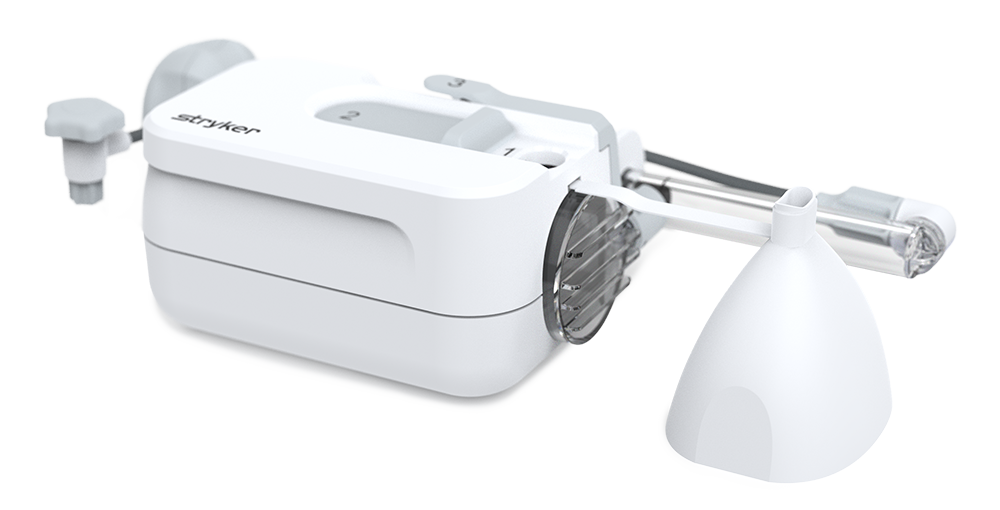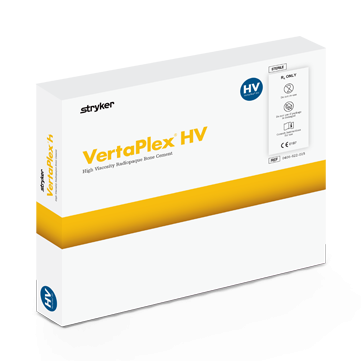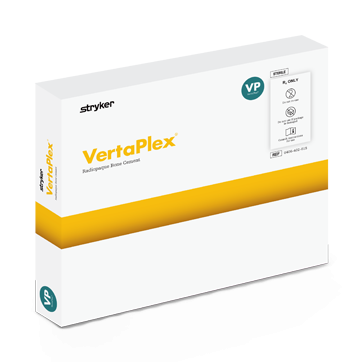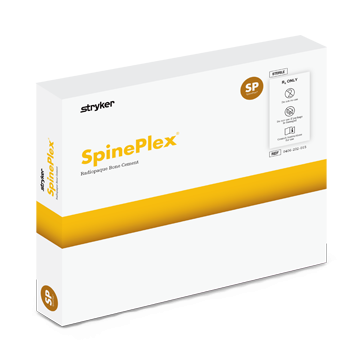Bone cements and mixer & delivery systems

AutoPlex M4
With the touch of a single button, AutoPlex M4 mixes and transfers highly viscous bone cement for delivery in less than 60 seconds.1
You don't have to choose between efficiency and cement control. AutoPlex M4 is designed to help maximize both—giving you the automatic standard.
- Cement control clutch stops cement flow immediately1
- Cement-ready in less than 60 seconds1
- Up to 29% reduction in radiation exposure2
- Flexible extension tube with swivel joint allows cement injection in multiple positions
- Easily connects to VertePort cement cannula
- Provides 11cc of deliverable cement1
- Tactile feedback on delivery knob indicates 0.1cc of cement injection (0.8cc per 360˚ rotation)
Please see Instructions for Use (IFU) for a complete listing of warnings, precautions and adverse events.
VertaPlex HV bone cement
VertaPlex HV bone cement is used for treating vertebral compression fractures. It reaches a thick viscosity as soon as it's mixed and maintains viscosity for an average of 18 minutes.3
VertaPlex HV cement was introduced in 2009 to address specific viscosity and working time preferences for physicians. In 2015, VertaPlex HV became the first polymethylmethacrylate (PMMA) cement in the U.S. to receive 510(k) clearance for the fixation of pathological fractures of the sacral vertebral body or ala using sacral vertebroplasty or sacroplasty.


VertaPlex bone cement
VertaPlex bone cement has been developed for physicians who want low initial viscosity and increased working time. Advantageous for multilevel vertebral augmentation, VertaPlex bone cement maintains its toothpaste-like consistency for an average of 20 minutes.3
SpinePlex bone cement
SpinePlex bone cement is a derivative of Simplex P bone cement and has an average working time of 10-12 minutes. It contains the same PMMA as Simplex P and is manufactured using the same proprietary process. Simplex P bone cement has proven through clinical testing to have high fatigue,5 compressive and flexural strengths,6 and low creep.7

Warning/adverse events
Serious adverse events, some with fatal outcome, associated with the use of bone cements for vertebroplasty, kyphoplasty and sacroplasty include myocardial infarction, cardiac arrest, cerebrovascular accident, pulmonary embolism and cardiac embolism. Although it is rare, some adverse events have been known to occur up to one year post-operatively. Additional risks exist with the use of bone cement. Please see the IFU for a complete list of potential risks.

